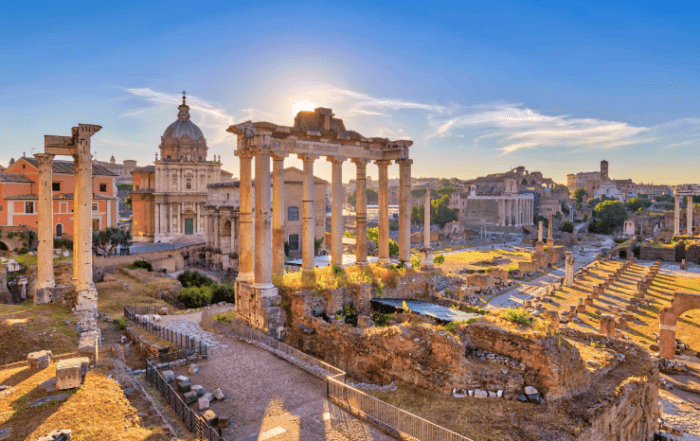Table of Contents
Wondering about the best cities to visit in Italy? Explore Romes ancient wonders, Florences Renaissance art, Venices romantic canals, Milans fashion scene, and Naples vibrant culture in this ultimate Italian travel guide!
1. Rome: The Eternal City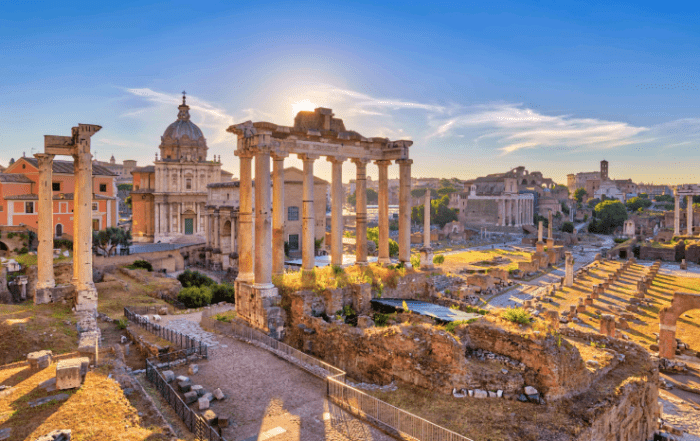
Rome, the capital of Italy, is often referred to as the "Eternal City" for good reason. Steeped in history that spans over 2,500 years, Rome is a living museum, where every corner tells a story of the past. From the mighty Colosseum, an iconic symbol of ancient Roman engineering and entertainment, to the Vatican City, the spiritual center of the Catholic Church and home to the Sistine Chapel with Michelangelos breathtaking frescoes, Rome is a city that leaves visitors in awe.
Key Attractions
- Colosseum: This ancient amphitheater could seat up to 80,000 spectators and was the site of gladiatorial contests, animal hunts, and public spectacles. A visit to the Colosseum is like stepping back in time, allowing you to imagine the grandeur and excitement of ancient Rome.
- Roman Forum: Once the heart of political, commercial, and social life in ancient Rome, the Forum is a vast archaeological site filled with ruins of temples, basilicas, and government buildings. Walking through the Forum, you can feel the echoes of the past and appreciate the significance of this historic area.
- Vatican City: As the smallest independent state in the world, Vatican City is a treasure trove of art and culture. St. Peters Basilica, with its magnificent dome and opulent interior, is a masterpiece of Renaissance architecture. The Vatican Museums house an extensive collection of art, including works by Raphael, Leonardo da Vinci, and, of course, the Sistine Chapel ceiling painted by Michelangelo.
Cultural Experiences
Rome is not just about ancient history; it is also a vibrant modern city with a rich cultural scene. The city is home to numerous theaters, art galleries, and music venues. The Teatro dellOpera di Roma is a renowned opera house that hosts world-class performances, while the Galleria Borghese showcases an impressive collection of Baroque art. Additionally, Romes street life is filled with cafes, restaurants, and markets, offering a taste of authentic Italian cuisine and lifestyle.
Practical Tips
- The best time to visit Rome is during the spring (April - June) or fall (September - October) when the weather is mild and the crowds are relatively smaller.
- To avoid long lines at popular attractions like the Colosseum and the Vatican Museums, it is advisable to book tickets in advance online.
- Rome is a walkable city, but public transportation, including buses and the metro, is also available for getting around.
2. Florence: The Cradle of the Renaissance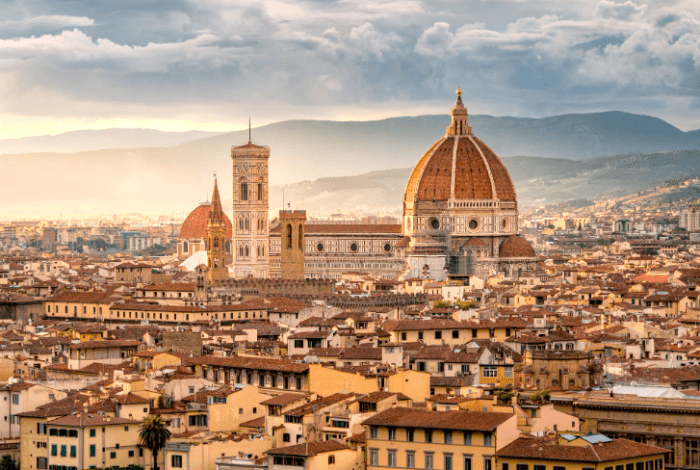
Florence, the capital of the Tuscany region, is widely regarded as the birthplace of the Renaissance. This city is a haven for art lovers, with its wealth of museums, galleries, and architectural masterpieces. From the iconic Duomo (Florence Cathedral) with its magnificent dome designed by Filippo Brunelleschi to the Uffizi Gallery, one of the worlds most famous art museums, Florence is a city that celebrates creativity and beauty.
Key Attractions
- Duomo (Florence Cathedral): The Duomo is a masterpiece of Gothic architecture and a symbol of Florence. Its massive dome, which was completed in 1436, was a remarkable engineering feat for its time. Climbing to the top of the dome offers breathtaking views of the city.
- Uffizi Gallery: Home to an unparalleled collection of Renaissance art, the Uffizi Gallery features works by legendary artists such as Botticelli, Michelangelo, Leonardo da Vinci, and Raphael. Some of the most famous paintings on display include Botticellis "The Birth of Venus" and "Primavera."
- Ponte Vecchio: This medieval bridge spanning the Arno River is lined with shops selling jewelry, leather goods, and souvenirs. The Ponte Vecchio is not only a popular tourist attraction but also a romantic spot, especially at sunset.
Cultural Experiences
Florence is a city that embraces art and culture in every aspect of life. The city hosts numerous festivals and events throughout the year, including the Maggio Musicale Fiorentino, a prestigious music festival, and the Festa della Rificolona, a traditional festival held in September. Additionally, Florences culinary scene is a delight for foodies, with its famous Tuscan dishes such as ribollita (a thick vegetable and bread soup), bistecca alla Fiorentina (Florentine steak), and gelato.
Practical Tips
- Florence can get quite crowded during the peak tourist season (June - August), so it is recommended to visit in the shoulder seasons (April - May or September - October).
- Many of Florences attractions require tickets, so it is advisable to check opening hours and book tickets in advance, especially for popular museums like the Uffizi Gallery.
- The historic center of Florence is pedestrian-friendly, making it easy to explore on foot. However, there are also buses and trams available for getting around the city.
3. Venice: The City of Canals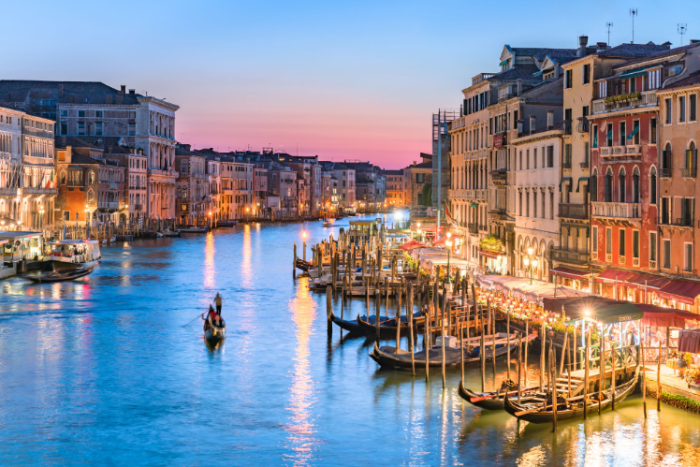
Venice, a unique city built on a group of 118 small islands separated by canals and linked by bridges, is a place like no other. Known as the "City of Canals" or "La Serenissima," Venice is a UNESCO World Heritage Site and a popular destination for romantics, art enthusiasts, and history buffs. From the stunning St. Marks Square with its magnificent basilica and Doges Palace to the narrow, winding streets and hidden canals, Venice offers a magical and unforgettable experience.
Key Attractions
- St. Marks Square (Piazza San Marco): This iconic square is the heart of Venice and is surrounded by some of the citys most famous landmarks. St. Marks Basilica, with its Byzantine architecture and mosaics, is a sight to behold, while the Doges Palace, once the residence of the Doge of Venice, showcases the citys political and cultural history.
- Grand Canal: The main waterway in Venice, the Grand Canal is lined with magnificent palaces, churches, and historic buildings. A gondola ride along the Grand Canal is a quintessential Venice experience, allowing you to soak in the citys unique atmosphere and admire its architectural beauty.
- Rialto Bridge: One of the most famous bridges in Venice, the Rialto Bridge spans the Grand Canal and offers stunning views of the surrounding area. The bridge is also a popular shopping spot, with numerous shops selling jewelry, glassware, and souvenirs.
Cultural Experiences
Venice is a city steeped in tradition and culture. The annual Venice Carnival, held in February, is a world-famous event where participants dress up in elaborate masks and costumes, creating a festive and magical atmosphere. Additionally, Venices art scene is thriving, with numerous galleries and exhibitions showcasing both contemporary and historical art. The city is also known for its glass-making industry, and visitors can take tours of glass-blowing workshops to witness this ancient craft in action.
Practical Tips
- Venice can be very crowded, especially during the summer months and major festivals. To avoid the crowds, consider visiting in the off-season (November - March), although be aware that some attractions may have reduced opening hours.
- The best way to get around Venice is by water taxi, gondola, or vaporetto (water bus). However, walking is also a great way to explore the citys narrow streets and hidden corners.
- Be prepared for high prices in Venice, as it is a popular tourist destination. Look for accommodation outside the historic center for more affordable options.
4. Milan: The Fashion and Design Capital
Milan, the economic and fashion capital of Italy, is a city that seamlessly blends modernity with history. Known for its high-end fashion boutiques, world-class design schools, and vibrant cultural scene, Milan is a destination that appeals to fashionistas, art lovers, and business travelers alike. From the iconic Duomo di Milano, one of the largest Gothic cathedrals in the world, to the trendy Brera district with its art galleries and cafes, Milan offers a diverse range of experiences.
Key Attractions
- Duomo di Milano: This magnificent cathedral is a masterpiece of Gothic architecture and a symbol of Milan. Its intricate facade, soaring spires, and stunning stained-glass windows make it a must-visit attraction. Climbing to the roof of the Duomo offers panoramic views of the city.
- Galleria Vittorio Emanuele II: One of the oldest shopping malls in the world, the Galleria Vittorio Emanuele II is a beautiful glass-domed arcade lined with luxury boutiques, cafes, and restaurants. It is also home to the famous bull mosaic, which is said to bring good luck to those who step on its testicles (a popular tradition among tourists).
- Sforza Castle: This medieval fortress, once the residence of the Sforza dynasty, now houses several museums and art collections. The castles courtyards and gardens are also worth exploring, offering a peaceful retreat from the bustling city.
Cultural Experiences
Milan is a city that never sleeps, with a vibrant nightlife and a thriving cultural scene. The city is home to numerous theaters, including the Teatro alla Scala, one of the most famous opera houses in the world. Milan Fashion Week, held twice a year, is a major event in the fashion industry, attracting designers, models, and fashion enthusiasts from around the globe. Additionally, Milans culinary scene is a mix of traditional Italian cuisine and international flavors, with a wide range of restaurants and bars to choose from.
Practical Tips
- Milan can be quite expensive, especially in terms of accommodation and dining. Look for deals and discounts, especially during the off-season.
- The best time to visit Milan is during the spring (April - June) or fall (September - October) when the weather is pleasant and there are fewer tourists.
- Milan has an efficient public transportation system, including the metro, buses, and trams. Taxis are also available, but they can be expensive.
5. Naples: The Birthplace of Pizza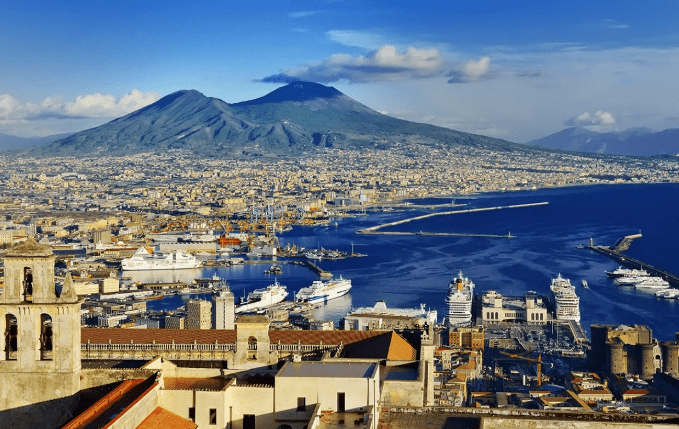
Naples, the capital of the Campania region, is a city with a rich history, vibrant culture, and a reputation for being the birthplace of pizza. Located on the beautiful Bay of Naples, this city offers a unique blend of ancient ruins, bustling markets, and a lively street life. From the historic center, a UNESCO World Heritage Site, to the nearby archaeological sites of Pompeii and Herculaneum, Naples is a destination that has something for everyone.
Key Attractions
- Historic Center of Naples: The historic center of Naples is a labyrinth of narrow streets, historic buildings, and churches. It is home to numerous landmarks, including the Naples Cathedral (Duomo di Napoli), the San Carlo Opera House, and the Castel Nuovo. The Spaccanapoli, a long, straight street that divides the historic center, is a great place to start exploring the city.
- Pompeii: Located just a short distance from Naples, Pompeii is an ancient Roman city that was buried under volcanic ash and pumice after the eruption of Mount Vesuvius in 79 AD. Today, Pompeii is an archaeological wonder, offering a fascinating glimpse life in ancient Rome.
- Herculaneum: Similar to Pompeii, Herculaneum was also destroyed by the eruption of Mount Vesuvius. However, Herculaneum was buried under a thick layer of mud, which helped to preserve many of its buildings and artifacts in better condition than Pompeii. A visit to Herculaneum is a must for history buffs.
Cultural Experiences
Naples is a city that is passionate about its food, music, and traditions. The city is famous for its pizza, and a visit to a local pizzeria is a must-do experience. Naples is also known for its street music, with musicians playing traditional Italian songs in the squares and alleys. Additionally, Naples has a rich folk culture, with festivals and celebrations held throughout the year, such as the Feast of San Gennaro, a major religious festival that takes place in September.
Practical Tips
- Naples can be a bit chaotic and crowded, especially in the historic center. Be prepared for a more lively and bustling atmosphere compared to other Italian cities.
- The best time to visit Naples is during the spring (April - June) or fall (September - October) when the weather is mild and the crowds are relatively smaller.
- Naples has a good public transportation system, including buses, trams, and a metro. However, walking is also a great way to explore the historic center and discover hidden gems.
Italy is a country that offers an abundance of incredible cities to visit, each with its own unique charm, history, and culture. Whether you are interested in ancient history, Renaissance art, fashion and design, or simply soaking up the Mediterranean sun, the best cities to visit in Italy have something to offer. From the grandeur of Rome to the romance of Venice, the artistry of Florence to the fashion-forward vibe of Milan, and the lively spirit of Naples, these cities are sure to leave you with memories that will last a lifetime. So, pack your bags, book your tickets, and get ready to embark on an unforgettable journey through the best cities to visit in Italy.
